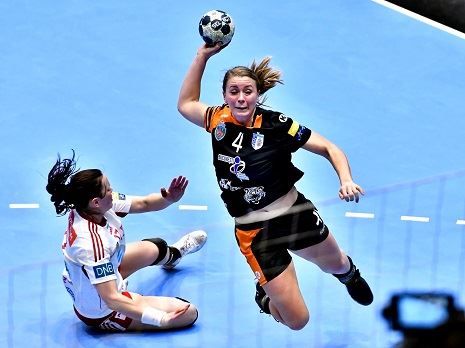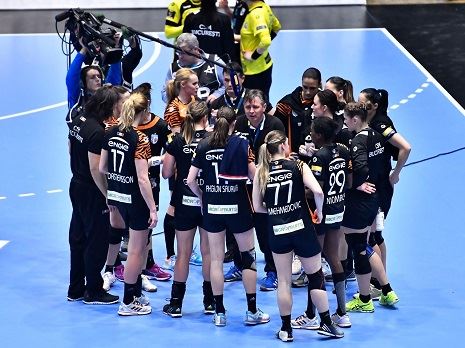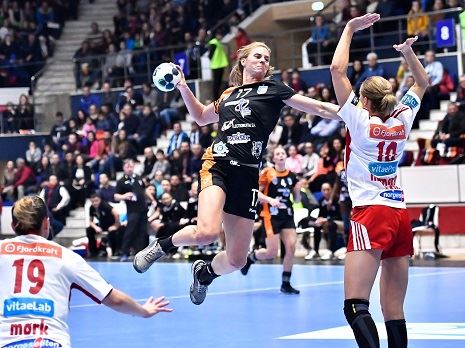

Coaching roulette: How CSM are trying to win the title again
Coaching roulette: How CSM are trying to win the title again
A successful sporting dynasty needs certain ingredients to succeed at the highest level. One of them, if not the most important, is stability.
However, CSM Bucuresti have different thoughts. They want to strengthen their grip on the Women’s EHF Champions League while thinking outside the box.
Since last season, the title holders have changed their coach no less than four times. Powerhouses like Györ, Larvik or Buducnost put their faith in only one man, no matter the results.
The latest major shock came last Friday when CMS chose Per Johansson to replace Aurelian Rosca for the business end of Europe’s prime club competition.
The perfect fit?
While the players might find it difficult to adapt to so many handball philosophies and models, the club management hopes for Johansson to be the perfect fit. The Swede previously coached his national team and won silver at the Women’s EHF EURO 2010.
However, the 46-year-old coach has not led a team since 2012, and could be seen as a major gamble for the Romanian title holders.
CSM’s coaching carrousel did not stop turning after Johansson’s arrival, as two days later the club announced yet another change.
Johansson is working on a short-term contract until the end of the season, and another Dane, Helle Thomsen, has already been signed as CSM coach for the next two years.
Starting 1 July, Thomsen will try to keep a stellar team in check, with standouts like Cristina Neagu, Isabelle Gulldén, Amanda Kurtovic and Paula Ungureanu in the roster. Thomsen will combine her job in Bucharest with her work as coach of the Dutch national women’s team.
CSM’s success last season was unprecedented in the modern era of the Women’s EHF Champions League and it came as a huge shock for all the pundits, and even the Romanian team themselves.
A rookie in the European top competition, CSM were the biggest underdog heading into the quarter-final phase with heavy defeats against Györ and Vardar in the main round.
CSM’s climb to success was atypical. After the summer preparation in 2015, players had to adapt as coach Mette Klit was replaced by Kim Rasmussen even before the start of the competition.
The rest is history
Then Rasmussen’s position was in doubt after the main round, but the Danish coach was saved by the team’s comeback win over Rostov-Don in the quarter-finals to make it to the Women’s EHF FINAL4 in Budapest. The rest is history.
Still, Rasmussen left for the Hungarian women’s national team and yet another Dane, Jakob Vestergaard, landed the coveted position.
“Kim had a better offer and he considered it was better for him to move on. It was a tough decision, but we had to accept it and move on,” CSM president Bogdan Vasiliu said.
But Vestergaard, who had served as a technical director at CSM in 2014, struggled from the beginning after his unsuccessful stint as coach of the German women’s national team.
Vestergaard failed to get grip on the roster and give them the right direction. A main-round berth came even under scrutiny after losses against Györ and Midtjylland.
Another change was needed, a traditional ‘shock in the team,’ as the old Romanian saying goes.
“Aurelian Rosca was the man that came in the right moment, a very difficult moment for CSM. We will be grateful for his services because he saved this season for the team,” Vasiliu said.
With not many options in the middle of the season, CSM found a coach who learnt from the best in Oltchim, built up his reputation with a gold medal at the World Junior Championships in 2014, and led HCM Baia Mare to the quarter-finals in the Women’s EHF Champions League last season.
CSM secured their main-round berth with a win in Rostov, had five consecutive games without a defeat, but their problems became more evident as the season progressed.
Unwatchable stints without a goal
There was no game in which CSM dominated from start to finish and the Romanian side had unwatchable stints without a goal. Their defence switched on and off, while the general feeling was that the title holders missed something in their play.
“I do not know what to do when those moments are kicking in. It is true, we must erase them from our play,” Rosca said after a 33:25 win against Team Esjberg, a game in which the Danish side reduced the gap to only one goal after a 6:1 partial to throw off the second half.
So it was no real upset that the always turning wheel of change brought in another coach. With only seven days before their first leg of the quarter-final against FTC-Rail Cargo Hungaria, Rosca left by mutual consent, and in came Johansson.
“If you do not risk, you will not win. It is not a motto which guides this club, but I think that sometimes in life you need to take radical decisions,” Vasiliu said. “Bringing Per Johansson in is a surprise for many and it is part of our strategy before the game against FTC.”
Such a move is a double-edged sword as CSM’s players need to learn and adapt to a new style again. Johansson will be buoyed by the fact that he will rely on two Swedish players he knows well from his time as national coach, Isabelle Gulldén and Linnea Torstensson.
As Gulldén and Torstensson are easily two of the most important players in the team, Johansson has the building blocks but little time to complete a makeover in only seven days.
But if last season proved anything, it is to never discount the power of a team led by veterans – the average age in CSM’s roster is 29.8 years, the highest in the competition.
If motivated and focused, the Romanian side could easily spring another surprise.








